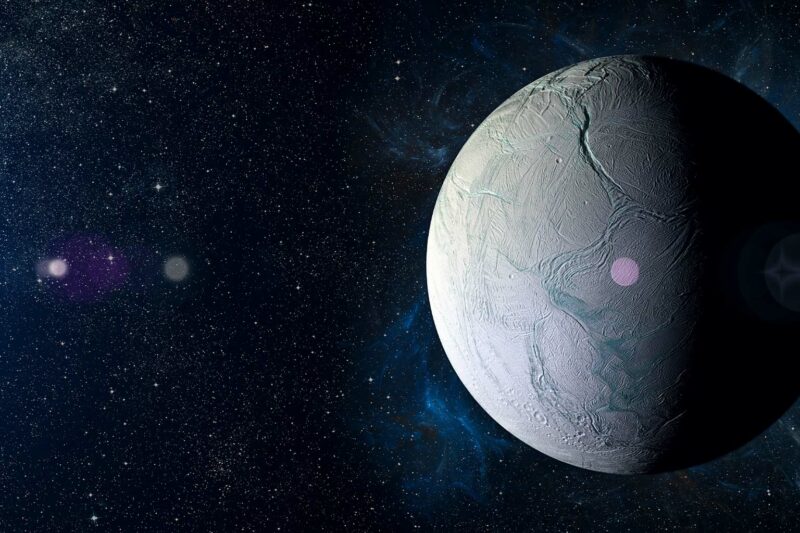

Enceladus, which is one of Saturn’s 83 moons, possesses a thick ice sheet under which exists a huge saltwater ocean.

Enceladus, which is one of Saturn’s 83 moons, possesses a thick ice sheet under which exists a huge saltwater ocean. Between the years 2005 and 2017, NASA’s Cassini spacecraft discovered numerous water plumes ejecting from the cracks in the surface of Enceladus. When Cassini passed through these plumes, it detected methane gas, which could indicate the presence of microbial life.
According to a new study by researchers at the University of Arizona, USA, an orbital probe that can collect amino acids from the water plumes would solve the mystery of whether Saturn’s moon Enceladus might harbour microbial alien life without even landing on the moon.
Did You Know?
Enceladus’ ice shell is 30 to 40kms thick.





